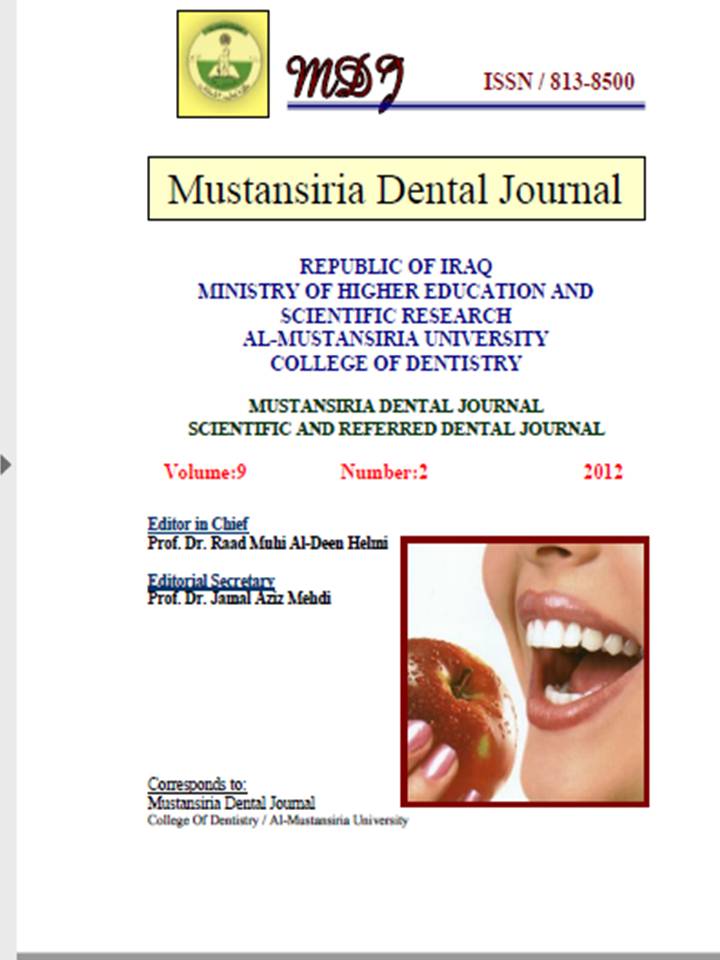The relationship of facial asymmetry and bite force to handedness in Iraqi adult sample
DOI:
https://doi.org/10.32828/mdj.v9i2.263Keywords:
Keywords: facial asymmetry, bite force, handedness, normal occlusion.Abstract
Facial asymmetry is a normal finding in clinically symmetrical faces. The
asymmetry in general was either functional and/or structural in nature. The objective
of this study was to investigate the relationship of the amount and direction of facial
asymmetry in clinically symmetrical faces with class I normal occlusion to
handedness, and to discover if there is any relation of occlusal bite force with
handedness and facial asymmetry in Iraqi Arab adult sample.
The sample was 60 untreated Iraqi adult persons, 30 right handers, 30 left handers
and each group consisted of 15 males and 15 females, with age range 18-25 years. For
each subject a posteroanterior radiograph was taken, and then a maximum molar bite
force was measured digitally in the first molar area on each side.
All subjects of the sample showed skeletal asymmetry although they have normal
occlusion and it was significantly greater in right handers than in left handers
(P<0.05).
Skeletal asymmetry was greater in males than females for both right and left
handers. In right-handers, the mean facial area on the left side was significantly
greater than that on the right side (P=0.000). In left handers, the mean facial area on
the right side was found to be significantly greater than that on the left side only in
females (P=0.004).
The bite force, in both right and left handed groups, was larger in males than in
females, with significant difference in right handers (P=0.03) and highly significant
difference in left handers (P=0.001).
Facial dimensions tend to be larger in males than in females. Skeletal asymmetry
was present even in clinically symmetrical faces with teeth in normal occlusion and it
was highly correlated to handedness. Bite force was independent of handedness with
significantly greater molar bite force in males than females.






